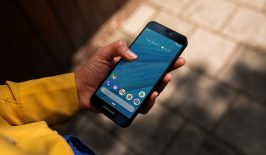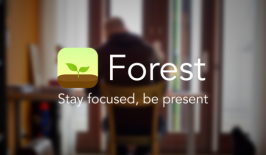Plantyflix is a subscription service that invests your monthly payment in planting trees – to offset all of the carbon emissions you generated last month by watching Netflix.
Most of us are pretty clued up by now about the carbon impact of our day-to-day decisions- whether we choose the train instead of the plane, how much food we waste, if our home energy provider uses renewable energy – they all add up to create our carbon, or ecological footprint. But the same transactional costs exist for all our digital activities too: sending email, refreshing Facebook, uploading photos to the cloud, and streaming. They all use energy, and all add up to create our individual digital carbon footprint.
A single online search takes just a few nanoseconds of computational time and nanowatts of electricity. But turn that into 3.5 billion searches a day (just an average day at Google) and it really adds up. And the worst offender? Video streaming. Service providers like Netflix, YouTube, Disney+ and co all have a huge appetite for energy and data. Anyone streaming from Netflix is downloading between 1GB to 7GB of data every hour. And before it ever reaches our screens, all of that data is stored in data centres and moved about the globe through undersea cables, through servers and routers, before finally being decoded on our devices. And each step of that chain costs energy – right now an estimated 60% of the internet’s carbon emissions comes from video streaming services.
How is watching Netflix like driving a car?
Plantyflix was conceived in Berlin by Fabrice Diedrich and Liam Hänel, who met, prior to the COVID-19 pandemic lockdown, at a sustainability event. While discussing streaming habits and sustainability, the concept of Plantyflix was born. The idea is to encourage people who watch Netflix to reduce their carbon footprint by planting trees through a monthly carbon-offset subscription that matches their streaming habit. The pair explained to RESET that their initial idea was turned into a website within just two weeks. They found their tree-planting partner in Eden Reforestation Projects and a polished version of the site was launched just in time for Earth Day on April 22nd 2020.
Data shown on Plantyflix comes from various different studies and the European Environment Agency and equates an hour of watching Netflix to generating 0.4 kg CO2. Plantyflix then equates this to car usage, stating on their homepage that, “All Netflix users combined emit as much CO2 in 1 second as driving a car 3.8x around the world.” Watching all episodes of Tiger King is equivalent to 2kg CO2e, or driving 20km in a car, watching all the seasons of Stranger Things is equivalent to 9kg CO2e, or driving 75km in a car. They’re powerful statements. But does that really mean that watching Netflix is worse than driving a car? When asked why they chose to measure the emissions in this way, Hänel and Diedrich explained that the metric wasn’t easy to choose.
“There are many ways to understand how your emissions occur through flying, driving, or even using a hair-dryer for a certain number of minutes. Flying is particularly bad, so we didn’t want to equate an hour of Netflix to less than a minute of flying. Cars make more sense. Nearly everyone has been in one, and they are something everyone knows is polluting, more or less. Even Teslas need to use electricity to charge,” said Diedrich. “We do know that Netflix already partly offsets their emissions in their data centres, but emissions go further through web traffic and from the end user’s screen of choice.”
They’re also clear about the fact that Netflix isn’t the only streaming site that will increase your carbon footprint. Other streaming sites and video-based communication, like video calls, all have a similar impact. They’ve simply chosen Netflix as a starting point to demonstrate the problem, because of its popularity, and plan to tackle other video-based sources of emissions in the future.
When asked why tree-planting was chosen as an offset strategy, and whether this was the most effective way of making up for the environmental damage potentially caused by the world’s love of streaming, the pair explained that they wanted to give a direct and tangible feeling to the impact of streaming Netflix, to the environment, as well as to sustainability practices. The website does offer a few simpler options for how to reduce the impact of what you watch too – including setting the video to a lower quality, and watching with friends or lovers. Yes, “Netflix and chill” really is better for the environment.
And then there’s the question of where the money goes. The current split is set at 50/20/30: 50% of the money goes directly to reforestation efforts, while 30% covers costs involved in running the website. A further 20% goes to another initiative already set up at carbon.so, (Plantyflix’s parent initative) involving direct contributions to carbon offset projects, such as helping fund micro wind farms in India.
When asked about the split, Diedrich was quick to explain that it may change in the future: “We’re still in early stages, so we need to pay the initial fees and costs involved in set-up, such as the payment provider, hosting, and so on. As the project continues, we will look at getting the split right to do the best we can in helping people make a difference.”
The pair explained to RESET that they’ve set themselves a goal of one million trees planted by the end of 2020. Given that an average user might average their Netflix habit at around 1-3 hours a day, meaning they elect to plant 10 trees a month at a 3 USD/month cost, that would mean an ambitious 14,200 conscientious users signing up to contribute. Let’s see if our streaming habits can be matched by more sustainable ones.
Update April 2021: Plantyflix has changed its name and its focus, and is now a tree-planting referral programme called Treeferral.









